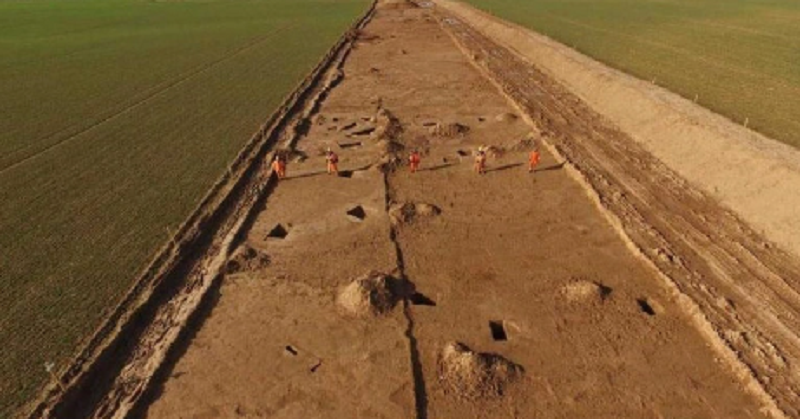Excavation work to lay cables for a wind power farm in England has turned into a great archaeological project by “encountering” a series of archaeological treasures from the Roman and iron ages.
According to the Yorkshire Post, the people who discovered this great archaeological treasure were workers working on the cable route across East Yorkshire, which is the world’s largest offshore wind farm electricity transmission network – Hornsea One of the UK.
The cable laying work from the Hornsea One wind farm across East Yorkshire has turned into a great archaeological work – Photo: AOC
The first discoveries occurred in Beeford, Yorkshire, where the work team encountered large trenches, filled with Roman pottery, when they still occupied England, about 2,000 years ago. Those ceramics were thrown away by the ancients, but now, they are extremely valuable antiques, not only because of their age and historical value but also because of the Romans’ outstandingly sophisticated manufacturing skills. . Here they also found a Roman roundhouse.
Each time a cluster of artifacts is excavated, the research team from AOC Archeology Group finds new clusters of artifacts. They said archaeological work is moving south, with extensive excavations in the two localities of Ulrome and Beeford.
“This is not a single archaeological site. The evidence we have unearthed shows that this area was home to bustling manufacturing communities that thrived during the Iron Age and Roman times.” “As well as pottery, a number of settlements, workshops, animal bones, evidence of industrial activity… have been found” – archaeologist Stephen Potten from AOC’s Yorkshire office, who head of the excavation, said.



